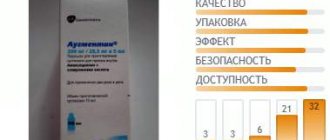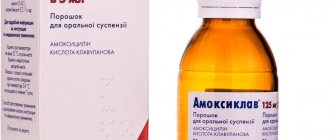pharmachologic effect
Antifungal drug.
Fluconazole has been shown to be active in vitro and in clinical infections against most of the following microorganisms: Candida alhicans, Candida glabrata (many strains are moderately sensitive), Candida parapsilosis, Candida tropicalis, Cryptococcus neoformans.
Fluconazole has been shown to be active in vitro against the following microorganisms, but its clinical significance is unknown: Candida dubliniensis, Candida guilliermondii, Candida kefyr, Candida lusitaniae.
Indications for use
- cryptococcosis, including cryptococcal meningitis and other localizations of this infection (including lungs, skin), both in patients with a normal immune response and in patients with various forms of immunosuppression (including AIDS patients, organ transplants ); the drug can be used to prevent cryptococcal infection in AIDS patients;
- generalized candidiasis, including candidemia, disseminated candidiasis and other forms of invasive candidiasis (including infections of the peritoneum, endocardium, eyes, respiratory and urinary tract). Treatment can be carried out in patients with malignant neoplasms, patients in intensive care units, patients receiving cytotoxic or immunosuppressive drugs, as well as in the presence of other factors predisposing to the development of candidiasis;
- candidiasis of the mucous membranes, incl. oral cavity and pharynx (including atrophic candidiasis of the oral cavity associated with wearing dentures), esophagus, non-invasive bronchopulmonary candidiasis, candiduria, cutaneous candidiasis; prevention of relapse of oropharyngeal candidiasis in patients with AIDS;
- genital candidiasis: vaginal candidiasis (acute and chronic recurrent), prophylactic use to reduce the frequency of relapses of vaginal candidiasis (3 or more episodes per year); candidal balanitis;
- prevention of fungal infections in patients with malignant neoplasms who are predisposed to such infections as a result of cytotoxic chemotherapy or radiation therapy;
- mycoses of the skin, including mycoses of the feet, body, groin area, pityriasis versicolor, onychomycosis and skin candidiasis;
- deep endemic mycoses, coccidioidomycosis, paracoccidioidomycosis, sporotrichosis and histoplasmosis in patients with normal immunity.
Diflucan
Single or multiple doses of fluconazole at a dose of 50 mg do not affect the metabolism of phenazone (antipyrine) when taken simultaneously.
Concomitant use of fluconazole with the following drugs is contraindicated
Cisapride: with the simultaneous use of fluconazole and cisapride, adverse reactions from the heart are possible, incl. ventricular tachysystolic ari. The use of fluconazole at a dose of 200 mg 1 time / day and cisapride at a dose of 20 mg 4 times / day leads to a marked increase in plasma concentrations of cisapride and an increase in the QT interval on the ECG. Concomitant use of cisapride and fluconazole is contraindicated.
Terfenadine: When azole antifungals are used concomitantly with terfenadine, serious arrhythmias may occur as a result of prolongation of the QT interval. When taking fluconazole at a dose of 200 mg/day, an increase in the QT interval has not been established, however, the use of fluconazole at doses of 400 mg/day and above causes a significant increase in the concentration of terfenadine in the blood plasma. Concomitant use of fluconazole in doses of 400 mg/day or more with terfenadine is contraindicated. Treatment with fluconazole in doses less than 400 mg/day in combination with terfenadine should be carried out under close monitoring.
Astemizole: simultaneous use of fluconazole with astemizole or other drugs whose metabolism is carried out by isoenzymes of the cytochrome P450 system may be accompanied by an increase in serum concentrations of these drugs. With an increase in the concentration of astemizole in the blood plasma, a prolongation of the QT interval and, in some cases, the development of ventricular tachysystolic arrhythmia are possible. The simultaneous use of astemizole and fluconazole is contraindicated.
Pimozide: Although adequate in vitro or in vivo studies have not been conducted, concomitant use of fluconazole and pimozide may result in inhibition of the metabolism of pimozide. In turn, an increase in plasma concentrations of pimozide can lead to a prolongation of the QT interval and, in some cases, to the development of ventricular tachysystolic arrhythmias. The simultaneous use of pimozide and fluconazole is contraindicated.
Quinidine: Although adequate in vitro or in vivo studies have not been conducted, concomitant use of fluconazole and quinidine may also result in inhibition of quinidine metabolism. Quinidine use is associated with QT prolongation and, in some cases, torsade de pointes (TdP). The simultaneous use of quinidine and fluconazole is contraindicated.
Erythromycin: Concomitant use of fluconazole and erythromycin potentially leads to an increased risk of cardiotoxicity (QT prolongation, torsade de pointes) and consequently sudden cardiac death. The simultaneous use of fluconazole and erythromycin is contraindicated.
Caution and possible dosage adjustments should be used when the following drugs are used concomitantly with fluconazole
Drugs affecting fluconazole
Hydrochlorothiazide: repeated use of hydrochlorothiazide concomitantly with fluconazole leads to an increase in fluconazole plasma concentrations by 40%. An effect of this severity does not require a change in the fluconazole dosage regimen in patients receiving concomitant diuretics, but the doctor should take this into account.
Rifampicin: simultaneous use of fluconazole and rifampicin leads to a decrease in AUC by 25% and a decrease in T1/2 of fluconazole by 20%. In patients concomitantly taking rifampicin, it is necessary to consider the advisability of increasing the dose of fluconazole.
Drugs Affected by Fluconazole
Fluconazole is a potent inhibitor of the CYP2C9 and CYP2C19 isoenzymes and a moderate inhibitor of the CYP3A4 isoenzyme. In addition, in addition to the effects listed below, there is a risk of increased plasma concentrations of other drugs metabolized by the isoenzymes CYP2C9, CYP2C19 and CYP3A4 when taken simultaneously with fluconazole. In this regard, caution should be exercised when using these drugs simultaneously, and, if necessary, similar combinations. Patients should be under close medical supervision. It should be taken into account that the inhibitory effect of fluconazole persists for 4-5 days after discontinuation of the drug due to the long T1/2.
Alfentanil: there is a decrease in clearance and Vd, an increase in T1/2 of alfentanil. This may be due to inhibition of the CYP3A4 isoenzyme by fluconazole. Alfentanil dosage adjustment may be required.
Amitriptyline, nortriptyline: increased effect. The concentration of 5-nortriptyline and/or S-amitriptyline can be determined at the beginning of combination therapy with fluconazole and one week after initiation. If necessary, the dose of amitriptyline/nortriptyline should be adjusted.
Amphotericin B: In studies in mice (including those with immunosuppression), the following results were observed: a small additive antifungal effect in systemic infection with Candida albicans, no interaction in intracranial infection with Cryptococcus neoformans and antagonism in systemic infection with A .fumigatus. The clinical significance of these results is unclear.
Anticoagulants: like other antifungal agents - azole derivatives, fluconazole, when used simultaneously with warfarin, increases the prothrombin time (by 12%), and therefore the development of bleeding (hematomas, bleeding from the nose and gastrointestinal tract, hematuria, melena) is possible. In patients receiving coumarin anticoagulants, prothrombin time must be constantly monitored. The advisability of adjusting the warfarin dose should also be assessed.
Azithromycin: with simultaneous oral administration of fluconazole in a single dose of 800 mg with azithromycin in a single dose of 1200 mg, no pronounced pharmacokinetic interaction has been established.
Benzodiazepines (short-acting): After oral administration of midazolam, fluconazole significantly increases midazolam concentrations and psychomotor effects, and this effect is more pronounced after oral administration of fluconazole than with intravenous administration. If concomitant therapy with benzodiazepines is necessary, patients taking fluconazole should be monitored to assess the appropriateness of an appropriate reduction in the benzodiazepine dose.
When taking triazolam simultaneously in a single dose, fluconazole increases the AUC of triazolam by approximately 50%, Cmax by 25-32% and T1/2 by 25-50% due to inhibition of triazolam metabolism. Triazolam dose adjustment may be necessary.
Carbamazepine: Fluconazole inhibits the metabolism of carbamazepine and increases plasma concentrations of carbamazepine by 30%. The risk of carbamazepine toxicity must be taken into account. The need for carbamazepine dose adjustment based on concentration/effect should be assessed.
Calcium channel blockers: Some calcium channel antagonists (nifedipine, isradipine, amlodipine, verapamil and felodipine) are metabolized by CYP3A4. Fluconazole increases the systemic exposure of calcium channel antagonists. Monitoring for the development of side effects is recommended.
Cyclosporine: In patients with a kidney transplant, the use of fluconazole at a dose of 200 mg/day leads to a slow increase in cyclosporine concentrations. However, with repeated doses of fluconazole at a dose of 100 mg/day, no changes in cyclosporine concentrations were observed in bone marrow recipients. When using fluconazole and cyclosporine simultaneously, it is recommended to monitor the concentration of cyclosporine in the blood.
Cyclophosphamide: with simultaneous use of cyclophosphamide and fluconazole, an increase in serum concentrations of bilirubin and creatinine is observed. This combination is acceptable given the risk of increased bilirubin and creatinine concentrations.
Fentanyl: There has been a report of one death possibly related to the concomitant use of fentanyl and fluconazole. The disturbances are believed to be related to fentanyl intoxication. Fluconazole has been shown to significantly prolong the clearance time of fentanyl. It should be borne in mind that an increase in the concentration of fentanyl can lead to depression of respiratory function.
Halofantrine: Fluconazole may increase plasma concentrations of halofantrine due to inhibition of CYP3A4.
HMG-CoA reductase inhibitors: When fluconazole is used concomitantly with HMG-CoA reductase inhibitors metabolized by the CYP3A4 isoenzyme (such as atorvastatin and simvastatin) or the CYP2D6 isoenzyme (such as fluvastatin), the risk of developing myopathy and rhabdomyolysis increases. If simultaneous therapy with these drugs is necessary, patients should be monitored to identify symptoms of myopathy and rhabdomyolysis. It is necessary to monitor the concentration of creatinine kinase. If there is a significant increase in creatinine kinase concentrations or if myopathy or rhabdomyolysis is diagnosed or suspected, therapy with HMG-CoA reductase inhibitors should be discontinued.
Losartan: Fluconazole inhibits the metabolism of losartan to its active metabolite (E-3174), which is responsible for most of the effects associated with angiotensin II receptor antagonism. Regular blood pressure monitoring is necessary.
Methadone: Fluconazole may increase plasma concentrations of methadone. Methadone dose adjustment may be necessary.
NSAIDs: Cmax and AUC of flurbiprofen increase by 23% and 81%, respectively. Similarly, the Cmax and AUC of the pharmacologically active isomer [S-(+)-ibuprofen] increased by 15% and 82%, respectively, when fluconazole was co-administered with racemic ibuprofen (400 mg). With simultaneous use of fluconazole at a dose of 200 mg/day and celecoxib at a dose of 200 mg, the Cmax and AUC of celecoxib increase by 68% and 134%, respectively. In this combination, it is possible to reduce the dose of celecoxib by half.
Although there are no targeted studies, fluconazole may increase the systemic exposure of other NSAIDs metabolized by CYP2C9 (eg, naproxen, lornoxicam, meloxicam, diclofenac). NSAID dose adjustment may be necessary.
When using NSAIDs and fluconazole concomitantly, patients should be under close medical supervision to identify and monitor NSAID-related adverse reactions and toxicities.
Oral contraceptives: with simultaneous use of a combined oral contraceptive with fluconazole at a dose of 50 mg, no significant effect on hormone levels has been established, while with daily administration of 200 mg of fluconazole, the AUC of ethinyl estradiol and levonorgestrel increases by 40% and 24%, respectively, and with 300 mg of fluconazole 1 time/week The AUC of ethinyl estradiol and norethindrone increased by 24% and 13%, respectively. Thus, repeated use of fluconazole in the indicated doses is unlikely to affect the effectiveness of the combined oral contraceptive.
Phenytoin: Concomitant use of fluconazole and phenytoin may be accompanied by a clinically significant increase in phenytoin concentrations. If simultaneous use of both drugs is necessary, phenytoin concentrations should be monitored and the dose adjusted accordingly to ensure therapeutic plasma concentrations.
Prednisone: there is a report of the development of acute adrenal insufficiency in a patient after liver transplantation while fluconazole was discontinued after a 3-month course of therapy. Presumably, cessation of fluconazole therapy caused an increase in the activity of the CYP3A4 isoenzyme, which led to increased metabolism of prednisone. Patients receiving combination therapy with prednisone and fluconazole should be under close medical supervision when discontinuing fluconazole to assess the condition of the adrenal cortex.
Rifabutin: simultaneous use of fluconazole and rifabutin can lead to an increase in plasma concentrations of the latter by up to 80%. Cases of uveitis have been described with the simultaneous use of fluconazole and rifabutin. Patients receiving rifabutin and fluconazole concomitantly should be monitored closely.
Saquinavir: AUC increases by approximately 50%, Cmax by 55%, clearance of saquinavir decreases by approximately 50% due to inhibition of hepatic metabolism of the CYP3A4 isoenzyme and inhibition of P-glycoprotein. Dose adjustment of saquinavir may be necessary.
Sirolimus: increased plasma concentrations of sirolimus, presumably due to inhibition of sirolimus metabolism through inhibition of the CYP3A4 isoenzyme and P-glycoprotein. This combination can be used with appropriate dose adjustment of sirolimus depending on the effect/concentration.
Sulfonylureas: Fluconazole, when taken concomitantly, leads to an increase in T1/2 of oral sulfonylureas (chlorpropamide, glibenclamide, glipizide and tolbutamide). Patients with diabetes mellitus can be prescribed fluconazole and sulfonylureas for oral administration simultaneously, but the possibility of hypoglycemia should be taken into account; in addition, regular monitoring of blood glucose levels and, if necessary, dose adjustment of sulfonylureas are necessary.
Tacrolimus: simultaneous use of fluconazole and tacrolimus (orally) leads to an increase in serum concentrations of the latter up to 5 times due to inhibition of the metabolism of tacrolimus occurring in the intestine through the CYP3A4 isoenzyme. No significant changes in the pharmacokinetics of the drugs were observed when tacrolimus was used intravenously. Cases of nephrotoxicity have been described. Patients receiving oral tacrolimus and fluconazole simultaneously require careful monitoring. The dose of tacrolimus should be adjusted depending on the degree of increase in its concentration in the blood.
Theophylline: when used simultaneously with fluconazole at a dose of 200 mg for 14 days, the average rate of plasma clearance of theophylline is reduced by 18%. When prescribing fluconazole to patients taking high doses of theophylline or to patients at increased risk of developing theophylline toxicity, monitor for symptoms of theophylline overdose and, if necessary, adjust therapy accordingly.
Tofacitinib: Tofacitinib exposure is increased when coadministered with drugs that are both moderate CYP3A4 inhibitors and strong CYP2C19 inhibitors (eg, fluconazole). A dose adjustment of tofacitinib may be necessary.
Vinca alkaloid: Although focused studies are lacking, it is suggested that fluconazole may increase plasma concentrations of vinca alkaloids (e.g., vincristine and vinblastine) and thus lead to neurotoxicity, possibly due to inhibition of CYP3A4.
Vitamin A: There has been a report of one case of the development of adverse reactions from the central nervous system in the form of pseudotumor cerebri with the simultaneous use of all-trans retinoic acid and fluconazole, which disappeared after discontinuation of fluconazole. The use of this combination is possible, but one should remember the possibility of adverse reactions from the central nervous system.
Zidovudine: when used simultaneously with fluconazole, an increase in the Cmax and AUC of zidovudine is observed by 84% and 74%, respectively. This effect is probably due to a decrease in the metabolism of the latter to its main metabolite. Before and after therapy with fluconazole at a dose of 200 mg/day for 15 days in patients with AIDS and ARC (AIDS-related complex), a significant increase in the AUC of zidovudine (20%) was established.
Patients receiving this combination should be monitored for side effects of zidovudine.
Voriconazole (inhibitor of isoenzymes CYP2C9, CYP2C19 and CYP3A4): simultaneous use of voriconazole (400 mg 2 times / day on the first day, then 200 mg 2 times / day for 2.5 days) and fluconazole (400 mg on the first day, then 200 mg/day for 4 days) leads to an increase in voriconazole concentration and AUC by 57% and 79%, respectively. It has been shown that this effect persists when the dose is reduced and/or the frequency of administration of any of the drugs is reduced. Concomitant use of voriconazole and fluconazole is not recommended.
Studies of the interaction of oral forms of fluconazole when taken simultaneously with food, cimetidine, antacids, as well as after total body irradiation in preparation for bone marrow transplantation showed that these factors do not have a clinically significant effect on the absorption of fluconazole.
The listed interaction was established with repeated use of fluconazole; Drug interactions resulting from a single dose of fluconazole are unknown. Doctors should note that interactions with other drugs have not been specifically studied, but are possible.
Pharmaceutical interactions
Diflucan® - solution for intravenous administration is compatible with the following solutions: 20% glucose solution, Ringer's solution, Hartmann's solution, potassium chloride solution in glucose, 4.2% sodium bicarbonate solution, aminofusin, isotonic saline solution. Diflucan® can be administered into the infusion system along with one of the solutions listed above. Although cases of specific incompatibility of fluconazole with other drugs have not been described, it is nevertheless not recommended to mix it with any other drugs before infusion.
Directions for use and doses
Inside. To prepare a suspension for oral administration, add 24 ml of water to the contents of one bottle and shake thoroughly. The suspension should be shaken before each use.
The daily dose of fluconazole depends on the nature and severity of the fungal infection. For vaginal candidiasis, in most cases, a single dose of the drug is effective. For infections requiring repeated administration of the antifungal drug, treatment should be continued until clinical or laboratory signs of the fungal infection disappear. Patients with AIDS and cryptococcal meningitis or recurrent oropharyngeal candidiasis usually require supportive care to prevent recurrence of infection.
Diflucan, 1 piece, 50 mg/5 ml, powder for oral suspension
Capsules: orally
, swallowing whole.
Solution for intravenous administration: i.v.
, in the form of infusion (at a rate of no more than 10 ml/min).
Suspension: orally
.
Therapy can be started pending results of cultures and other laboratory tests. However, anti-infective therapy will need to be modified accordingly once the results of these studies become known.
Fluconazole can be taken orally or administered intravenously by infusion at a rate of no more than 10 ml/min. The choice of route of administration depends on the clinical condition of the patient. When transferring a patient from intravenous to oral administration of the drug or vice versa, no change in the daily dose is required. In a solution for intravenous administration, fluconazole is dissolved in 0.9% sodium chloride solution; Each 200 mg (100 ml bottle) contains 15 mmol Na+ and Cl-. Therefore, in patients who require sodium or fluid restriction, the rate of fluid administration must be considered.
The daily dose of Diflucan® depends on the nature and severity of the fungal infection. For vaginal candidiasis, in most cases, a single dose of the drug is effective. For infections that require repeated administration of an antifungal drug, treatment should be continued until clinical or laboratory signs of active fungal infection disappear. Patients with AIDS and cryptococcal meningitis or recurrent oropharyngeal candidiasis usually require supportive care to prevent recurrence of infection.
Use in adults
1. For cryptococcal meningitis and cryptococcal infections of other localizations
on day 1, 400 mg is usually prescribed, and then treatment is continued at a dose of 200–400 mg once a day. The duration of treatment for cryptococcal infections depends on the presence of clinical and mycological effect; For cryptococcal meningitis, treatment is usually continued for at least 6–8 weeks.
To prevent relapse of cryptococcal meningitis in patients with AIDS, after completing the full course of primary treatment, therapy with Diflucan® at a dose of 200 mg/day can be continued for a very long period.
2. For candidemia, disseminated candidiasis and other invasive candidal infections
the dose is usually 400 mg on the 1st day, then 200 mg/day. Depending on the severity of the clinical effect, the dose can be increased to 400 mg/day. The duration of therapy depends on clinical effectiveness.
3. For oropharyngeal candidiasis
the drug is usually prescribed at a dose of 50–100 mg once a day for 7–14 days. If necessary, in patients with severe suppression of immune function, treatment can be continued for a longer time. For atrophic oral candidiasis associated with wearing dentures, the drug is usually prescribed at a dose of 50 mg once a day for 14 days in combination with local antiseptics for the treatment of the denture.
For other candidiasis infections of the mucous membranes (with the exception of genital candidiasis, see below), such as esophagitis, non-invasive bronchopulmonary infections, candiduria, candidiasis of the skin and mucous membranes, etc., the effective dose is usually 50-100 mg / day at Duration of treatment is 14–30 days.
To prevent relapses of oropharyngeal candidiasis in patients with AIDS after completing the full course of primary therapy, Diflucan® can be prescribed 150 mg once a week.
4. For vaginal candidiasis
Diflucan® is prescribed once orally at a dose of 150 mg.
To reduce the frequency of relapses of vaginal candidiasis, the drug can be used at a dose of 150 mg once a month. The duration of therapy is determined individually; it varies from 4 to 12 months. Some patients may require more frequent use of the drug. Single dose use in children under 18 years of age and in patients over 60 years of age is not recommended without a doctor's prescription.
For balanitis caused by Candida
, Diflucan® is prescribed as a single dose of 150 mg orally.
5. To prevent candidiasis
The recommended dose of Diflucan® is 50–400 mg 1 time per day, depending on the degree of risk of developing a fungal infection. For patients at high risk of generalized infection, for example with severe or long-lasting neutropenia, the recommended dose is 400 mg once daily. Diflucan® is prescribed a few days before the expected development of neutropenia and after the number of neutrophils increases to more than 1000 per mm3, treatment is continued for another 7 days.
6. For skin infections, including mycoses of the feet, smooth skin, groin area and candidiasis infections
The recommended dose is 150 mg once a week or 50 mg once a day. The duration of therapy is usually 2–4 weeks, however, for mycoses of the feet, longer therapy (up to 6 weeks) may be required.
For pityriasis versicolor, the recommended dose is 300 mg once a week for 2 weeks; some patients require a third dose of 300 mg/week, while for some patients a single dose of 300–400 mg is sufficient. An alternative treatment regimen is to use the drug 50 mg once a day for 2–4 weeks.
For tinea unguium
(onychomycosis) the recommended dose is 150 mg once a week. Treatment should be continued until the infected nail is replaced (the uninfected nail regrows). Fingernails and toenails typically take 3–6 and 6–12 months to re-grow, respectively. However, growth rate can vary widely between individuals and also depending on age. After successful treatment of long-standing chronic infections, a change in the shape of the nails is sometimes observed.
7. For deep endemic mycoses
It may be necessary to use the drug at a dose of 200–400 mg/day for up to 2 years. The duration of therapy is determined individually; it is 11–24 months for coccidioidomycosis; 2–17 months - for paracoccidioidomycosis; 1–16 months for sporotrichosis and 3–17 months for histoplasmosis.
Use in children
As with similar infections in adults, the duration of treatment depends on the clinical and mycological effect. For children, the daily dose of the drug should not exceed that for adults. Diflucan® is used daily, once a day.
For candidiasis of the mucous membranes
The recommended dose of Diflucan® is 3 mg/kg/day. On the first day, in order to more quickly achieve constant Css, a loading dose of 6 mg/kg can be prescribed.
For the treatment of generalized candidiasis and cryptococcal infections
The recommended dose is 6–12 mg/kg/day, depending on the severity of the disease.
To prevent fungal infections
in immunosuppressed patients in whom the risk of developing infection is associated with neutropenia developing as a result of cytotoxic chemotherapy or radiation therapy, the drug is prescribed at 3-12 mg/kg/day, depending on the severity and duration of persistence of the induced neutropenia (see dosage for adults; for children with renal failure - see dosage for patients with renal failure).
Use in children 4 weeks of age or less
In newborns, fluconazole is eliminated slowly. In the first 2 weeks of life, the drug is prescribed at the same dose (in mg/kg) as for older children, but with an interval of 72 hours. For children aged 3 and 4 weeks, the same dose is administered with an interval of 48 hours.
Use in the elderly
In the absence of signs of renal failure, the drug is prescribed at the usual dose. In patients with renal failure (Cl creatinine <50 ml/min), the dose of the drug is adjusted as described below.
Use in patients with renal failure
Fluconazole is excreted mainly in the urine unchanged. With a single dose, no dose change is required. In patients (including children) with impaired renal function with repeated use of the drug, a loading dose of 50 to 400 mg should be initially administered, after which the daily dose (depending on the indication) is set as follows:
| Creatinine clearance, ml/min | Percentage of recommended dose |
| >50 | 100% |
| <50 (without dialysis) | 50% |
| Regular dialysis | 100% (after each dialysis) |
Instructions for preparing a suspension for oral administration
Instructions for preparing the suspension: add 24 ml of water to the contents of 1 bottle of powder for preparing the suspension and shake thoroughly. Shake before each use.
Contraindications
- simultaneous use of terfenadine during repeated use of fluconazole at a dose of 400 mg/day or more;
- simultaneous use with drugs that increase the QT interval and are metabolized by the CYP3A4 isoenzyme, such as cisapride, astemizole, erythromycin, pimozide and quinidine;
- sucrase/isomaltase deficiency, fructose intolerance, glucose-galactose malabsorption
- hypersensitivity to fluconazole, other components of the drug or azole substances with a structure similar to fluconazole.
Diflucan®
Single or multiple doses of fluconazole at a dose of 50 mg do not affect the metabolism of phenazone (Antipyrine) when taken simultaneously.
Concomitant use of fluconazole with the following drugs is contraindicated:
Cisapride: with the simultaneous use of fluconazole and cisapride, adverse reactions from the heart are possible, including ventricular tachysystolic arrhythmia of the “pirouette” type (torsade de pointes). The use of fluconazole at a dose of 200 mg once a day and cisapride at a dose of 20 mg 4 times a day leads to a marked increase in plasma concentrations of cisapride and an increase in the QT interval on the ECG. Concomitant use of cisapride and fluconazole is contraindicated.
Terfenadine: When azole antifungals are used concomitantly with terfenadine, serious arrhythmias may occur as a result of prolongation of the QT interval. When taking fluconazole at a dose of 200 mg/day, an increase in the QT interval has not been established, however, the use of fluconazole at doses of 400 mg/day and above causes a significant increase in the concentration of terfenadine in the blood plasma. Concomitant use of fluconazole in doses of 400 mg/day or more with terfenadine is contraindicated (see section “Contraindications”). Treatment with fluconazole in doses less than 400 mg/day in combination with terfenadine should be carried out under close monitoring.
Astemizole: simultaneous use of fluconazole with astemizole or other drugs metabolized by the cytochrome P450 system may be accompanied by an increase in serum concentrations of these drugs. Elevated concentrations of astemizole in blood plasma can lead to prolongation of the QT interval and, in some cases, to the development of ventricular tachysystolic arrhythmia of the “pirouette” type (torsade de pointes). The simultaneous use of astemizole and fluconazole is contraindicated.
Pimozide: although no relevant in vitro
or
in vivo
, the simultaneous use of fluconazole and pimozide may lead to inhibition of the metabolism of pimozide. In turn, an increase in plasma concentrations of pimozide can lead to a prolongation of the QT interval and, in some cases, to the development of ventricular tachysystolic arrhythmia of the “pirouette” type (torsade de pointes). The simultaneous use of pimozide and fluconazole is contraindicated.
Quinidine: Although no relevant in vitro
or
in vivo
, concomitant use of fluconazole and quinidine may also lead to inhibition of quinidine metabolism. The use of quinidine is associated with prolongation of the QT interval and, in some cases, with the development of ventricular tachysystolic arrhythmia of the “torsade de pointes” type. The simultaneous use of quinidine and fluconazole is contraindicated.
Erythromycin: Concomitant use of fluconazole and erythromycin potentially leads to an increased risk of cardiotoxicity (QT prolongation, torsade de pointes) and consequently sudden cardiac death. The simultaneous use of fluconazole and erythromycin is contraindicated.
Caution and possible dosage adjustments should be used when the following drugs are used concomitantly with fluconazole.
Drugs that affect fluconazole:
Hydrochlorothiazide: repeated use of hydrochlorothiazide concomitantly with fluconazole leads to an increase in plasma concentrations of fluconazole by 40%. An effect of this severity does not require a change in the fluconazole dosage regimen in patients receiving concomitant diuretics, but the doctor should take this into account.
Rifampicin: Concomitant use of fluconazole and rifampicin results in a 25% decrease in AUC and a 20% decrease in fluconazole half-life. In patients concomitantly taking rifampicin, it is necessary to consider the advisability of increasing the dose of fluconazole.
Drugs Affected by Fluconazole: Fluconazole is a potent inhibitor of the cytochrome P450 isoenzyme CYP2C9 and CYP2C19 and a moderate inhibitor of the CYP3A4 isoenzyme. In addition, in addition to the effects listed below, there is a risk of increased plasma concentrations of other drugs metabolized by the isoenzymes CYP2C9, CYP2C19 and CYP3A4 when taken simultaneously with fluconazole. In this regard, caution should be exercised when using these drugs simultaneously, and if such combinations are necessary, patients should be under close medical supervision. It should be taken into account that the inhibitory effect of fluconazole persists for 4-5 days after discontinuation of the drug due to the long half-life.
Alfentanil: There is a decrease in clearance and volume of distribution, and an increase in the half-life of alfentanil. This may be due to inhibition of the CYP3A4 isoenzyme by fluconazole. Alfentanil dosage adjustment may be required.
Amitriptyline, nortriptyline: increased effect. Concentrations of 5-nortriptyline and/or S-amitriptyline can be measured at the start of combination therapy with fluconazole and one week after initiation. If necessary, the dose of amitriptyline/nortriptyline should be adjusted.
Amphotericin B: In studies in mice (including immunosuppressed mice), the following results were observed: small additive antifungal effect against systemic C. albicans
, lack of interaction in intracranial infection caused by
Cryptococcus neoformans
and antagonism in systemic infection caused by
A. fumigatus
. The clinical significance of these results is unclear.
Anticoagulants: like other antifungal agents (azole derivatives), fluconazole, when used simultaneously with warfarin, increases prothrombin time (by 12%), and therefore may develop bleeding (hematomas, bleeding from the nose and gastrointestinal tract, hematuria, melena ). In patients receiving coumarin anticoagulants, prothrombin time must be constantly monitored. The advisability of adjusting the warfarin dose should also be assessed.
Azithromycin: with simultaneous oral use of fluconazole in a single dose of 800 mg with azithromycin in a single dose of 1200 mg, no pronounced pharmacokinetic interaction has been established between both drugs.
Benzodiazepines (short-acting): After oral administration of midazolam, fluconazole significantly increases midazolam concentrations and psychomotor effects, and this effect is more pronounced after fluconazole is administered orally than when fluconazole is administered intravenously. If concomitant therapy with benzodiazepines is necessary, patients taking fluconazole should be monitored to assess the appropriateness of an appropriate reduction in the benzodiazepine dose.
When coadministered with a single dose of triazolam, fluconazole increased the area under the voriconazole concentration-time curve by 57% and 79%, respectively. It has been shown that this effect persists when the dose is reduced and/or the frequency of administration of any of the drugs is reduced. Concomitant use of voriconazole and fluconazole is not recommended.
Studies of the interaction of oral forms of fluconazole when taken simultaneously with food, cimetidine, antacids, as well as after total body irradiation in preparation for bone marrow transplantation showed that these factors do not have a clinically significant effect on the absorption of fluconazole.
The listed interactions were established with repeated use of fluconazole; There are no known drug interactions resulting from a single dose of fluconazole.
Doctors should note that interactions with other drugs have not been specifically studied, but are possible.
special instructions
Treatment can be started in the absence of culture or other laboratory test results, but if they are available, appropriate adjustment of fungicidal therapy is recommended.
When using the drug in children aged 4 weeks or less, it should be borne in mind that fluconazole is excreted slowly in newborns. In the first 2 weeks of life, the drug is prescribed at the same dose (in mg/kg) as for older children, but with an interval of 72 hours. For children aged 3 and 4 weeks of life, the same dose is administered with an interval of 48 hours.
Diflucan Susp 50mg/5ml 35ml (Pfizer)
Single or multiple doses of fluconazole at a dose of 50 mg do not affect the metabolism of phenazone (antipyrine) when taken simultaneously. The simultaneous use of fluconazole with the following drugs is contraindicated. Cisapride: with the simultaneous use of fluconazole and cisapride, adverse reactions from the heart are possible, incl. ventricular tachysystolic ari. The use of fluconazole at a dose of 200 mg 1 time / day and cisapride at a dose of 20 mg 4 times / day leads to a marked increase in plasma concentrations of cisapride and an increase in the QT interval on the ECG. Concomitant use of cisapride and fluconazole is contraindicated. Terfenadine: When azole antifungals are used concomitantly with terfenadine, serious arrhythmias may occur as a result of prolongation of the QT interval. When taking fluconazole at a dose of 200 mg/day, an increase in the QT interval has not been established, however, the use of fluconazole at doses of 400 mg/day and above causes a significant increase in the concentration of terfenadine in the blood plasma. Concomitant use of fluconazole in doses of 400 mg/day or more with terfenadine is contraindicated. Treatment with fluconazole in doses less than 400 mg/day in combination with terfenadine should be carried out under close monitoring. Astemizole: simultaneous use of fluconazole with astemizole or other drugs whose metabolism is carried out by isoenzymes of the cytochrome P450 system may be accompanied by an increase in serum concentrations of these drugs. With an increase in the concentration of astemizole in the blood plasma, a prolongation of the QT interval and, in some cases, the development of ventricular tachysystolic arrhythmia are possible. The simultaneous use of astemizole and fluconazole is contraindicated. Pimozide: Although adequate in vitro or in vivo studies have not been conducted, concomitant use of fluconazole and pimozide may result in inhibition of the metabolism of pimozide. In turn, an increase in plasma concentrations of pimozide can lead to a prolongation of the QT interval and, in some cases, to the development of ventricular tachysystolic arrhythmias. The simultaneous use of pimozide and fluconazole is contraindicated. Quinidine: Although adequate in vitro or in vivo studies have not been conducted, concomitant use of fluconazole and quinidine may also result in inhibition of quinidine metabolism. Quinidine use is associated with QT prolongation and, in some cases, torsade de pointes (TdP). The simultaneous use of quinidine and fluconazole is contraindicated. Erythromycin: Concomitant use of fluconazole and erythromycin potentially leads to an increased risk of cardiotoxicity (QT prolongation, torsade de pointes) and consequently sudden cardiac death. The simultaneous use of fluconazole and erythromycin is contraindicated. Caution and possible dosage adjustments should be used when the following drugs are used concomitantly with fluconazole Drugs affecting fluconazole Hydrochlorothiazide: Repeated use of hydrochlorothiazide concomitantly with fluconazole results in an increase in fluconazole plasma concentrations by 40%. An effect of this severity does not require a change in the fluconazole dosage regimen in patients receiving concomitant diuretics, but the doctor should take this into account. Rifampicin: simultaneous use of fluconazole and rifampicin leads to a decrease in AUC by 25% and a decrease in T1/2 of fluconazole by 20%. In patients concomitantly taking rifampicin, it is necessary to consider the advisability of increasing the dose of fluconazole. Drugs Affected by Fluconazole Fluconazole is a potent inhibitor of CYP2C9 and CYP2C19 and a moderate inhibitor of CYP3A4. In addition, in addition to the effects listed below, there is a risk of increased plasma concentrations of other drugs metabolized by the isoenzymes CYP2C9, CYP2C19 and CYP3A4 when taken simultaneously with fluconazole. In this regard, caution should be exercised when using these drugs simultaneously, and, if necessary, similar combinations. Patients should be under close medical supervision. It should be taken into account that the inhibitory effect of fluconazole persists for 4-5 days after discontinuation of the drug due to the long T1/2. Alfentanil: there is a decrease in clearance and Vd, an increase in T1/2 of alfentanil. This may be due to inhibition of the CYP3A4 isoenzyme by fluconazole. Alfentanil dosage adjustment may be required. Amitriptyline, nortriptyline: increased effect. The concentration of 5-nortriptyline and/or S-amitriptyline can be determined at the beginning of combination therapy with fluconazole and one week after initiation. If necessary, the dose of amitriptyline/nortriptyline should be adjusted. Amphotericin B: In studies in mice (including those with immunosuppression), the following results were observed: a small additive antifungal effect in systemic infection with Candida albicans, no interaction in intracranial infection with Cryptococcus neoformans and antagonism in systemic infection with A .fumigatus. The clinical significance of these results is unclear. Anticoagulants: like other antifungal agents - azole derivatives, fluconazole, when used simultaneously with warfarin, increases the prothrombin time (by 12%), and therefore the development of bleeding (hematomas, bleeding from the nose and gastrointestinal tract, hematuria, melena) is possible. In patients receiving coumarin anticoagulants, prothrombin time must be constantly monitored. The advisability of adjusting the warfarin dose should also be assessed. Azithromycin: with simultaneous oral administration of fluconazole in a single dose of 800 mg with azithromycin in a single dose of 1200 mg, no pronounced pharmacokinetic interaction has been established. Benzodiazepines (short-acting): After oral administration of midazolam, fluconazole significantly increases midazolam concentrations and psychomotor effects, and this effect is more pronounced after oral administration of fluconazole than with intravenous administration. If concomitant therapy with benzodiazepines is necessary, patients taking fluconazole should be monitored to assess the appropriateness of an appropriate reduction in the benzodiazepine dose. When taking triazolam simultaneously in a single dose, fluconazole increases the AUC of triazolam by approximately 50%, Cmax by 25-32% and T1/2 by 25-50% due to inhibition of triazolam metabolism. Triazolam dose adjustment may be necessary. Carbamazepine: Fluconazole inhibits the metabolism of carbamazepine and increases plasma concentrations of carbamazepine by 30%. The risk of carbamazepine toxicity must be taken into account. The need for carbamazepine dose adjustment based on concentration/effect should be assessed. Calcium channel blockers: Some calcium channel antagonists (nifedipine, isradipine, amlodipine, verapamil and felodipine) are metabolized by CYP3A4. Fluconazole increases the systemic exposure of calcium channel antagonists. Monitoring for the development of side effects is recommended. Cyclosporine: In patients with a kidney transplant, the use of fluconazole at a dose of 200 mg/day leads to a slow increase in cyclosporine concentrations. However, with repeated doses of fluconazole at a dose of 100 mg/day, no changes in cyclosporine concentrations were observed in bone marrow recipients. When using fluconazole and cyclosporine simultaneously, it is recommended to monitor the concentration of cyclosporine in the blood. Cyclophosphamide: with simultaneous use of cyclophosphamide and fluconazole, an increase in serum concentrations of bilirubin and creatinine is observed. This combination is acceptable given the risk of increased bilirubin and creatinine concentrations. Fentanyl: There has been a report of one death possibly related to the concomitant use of fentanyl and fluconazole. The disturbances are believed to be related to fentanyl intoxication. Fluconazole has been shown to significantly prolong the clearance time of fentanyl. It should be borne in mind that an increase in the concentration of fentanyl can lead to depression of respiratory function. Halofantrine: Fluconazole may increase plasma concentrations of halofantrine due to inhibition of CYP3A4. HMG-CoA reductase inhibitors: When fluconazole is used concomitantly with HMG-CoA reductase inhibitors metabolized by the CYP3A4 isoenzyme (such as atorvastatin and simvastatin) or the CYP2D6 isoenzyme (such as fluvastatin), the risk of developing myopathy and rhabdomyolysis increases. If simultaneous therapy with these drugs is necessary, patients should be monitored to identify symptoms of myopathy and rhabdomyolysis. It is necessary to monitor the concentration of creatinine kinase. If there is a significant increase in creatinine kinase concentrations or if myopathy or rhabdomyolysis is diagnosed or suspected, therapy with HMG-CoA reductase inhibitors should be discontinued. Losartan: Fluconazole inhibits the metabolism of losartan to its active metabolite (E-3174), which is responsible for most of the effects associated with angiotensin II receptor antagonism. Regular blood pressure monitoring is necessary. Methadone: Fluconazole may increase plasma concentrations of methadone. Methadone dose adjustment may be necessary. NSAIDs: Cmax and AUC of flurbiprofen increase by 23% and 81%, respectively. Similarly, the Cmax and AUC of the pharmacologically active isomer [S-(+)-ibuprofen] increased by 15% and 82%, respectively, when fluconazole was co-administered with racemic ibuprofen (400 mg). With simultaneous use of fluconazole at a dose of 200 mg/day and celecoxib at a dose of 200 mg, the Cmax and AUC of celecoxib increase by 68% and 134%, respectively. In this combination, it is possible to reduce the dose of celecoxib by half. Although there are no targeted studies, fluconazole may increase the systemic exposure of other NSAIDs metabolized by CYP2C9 (eg, naproxen, lornoxicam, meloxicam, diclofenac). NSAID dose adjustment may be necessary. When using NSAIDs and fluconazole concomitantly, patients should be under close medical supervision to identify and monitor NSAID-related adverse reactions and toxicities. Oral contraceptives: with simultaneous use of a combined oral contraceptive with fluconazole at a dose of 50 mg, no significant effect on hormone levels has been established, while with daily administration of 200 mg of fluconazole, the AUC of ethinyl estradiol and levonorgestrel increases by 40% and 24%, respectively, and with 300 mg of fluconazole 1 time/week The AUC of ethinyl estradiol and norethindrone increased by 24% and 13%, respectively. Thus, repeated use of fluconazole in the indicated doses is unlikely to affect the effectiveness of the combined oral contraceptive. Phenytoin: Concomitant use of fluconazole and phenytoin may be accompanied by a clinically significant increase in phenytoin concentrations. If simultaneous use of both drugs is necessary, phenytoin concentrations should be monitored and the dose adjusted accordingly to ensure therapeutic plasma concentrations. Prednisone: there is a report of the development of acute adrenal insufficiency in a patient after liver transplantation while fluconazole was discontinued after a 3-month course of therapy. Presumably, cessation of fluconazole therapy caused an increase in the activity of the CYP3A4 isoenzyme, which led to increased metabolism of prednisone. Patients receiving combination therapy with prednisone and fluconazole should be under close medical supervision when discontinuing fluconazole to assess the condition of the adrenal cortex. Rifabutin: simultaneous use of fluconazole and rifabutin can lead to an increase in plasma concentrations of the latter by up to 80%. Cases of uveitis have been described with the simultaneous use of fluconazole and rifabutin. Patients receiving rifabutin and fluconazole concomitantly should be monitored closely. Saquinavir: AUC increases by approximately 50%, Cmax by 55%, clearance of saquinavir decreases by approximately 50% due to inhibition of hepatic metabolism of the CYP3A4 isoenzyme and inhibition of P-glycoprotein. Dose adjustment of saquinavir may be necessary. Sirolimus: increased plasma concentrations of sirolimus, presumably due to inhibition of sirolimus metabolism through inhibition of the CYP3A4 isoenzyme and P-glycoprotein. This combination can be used with appropriate dose adjustment of sirolimus depending on the effect/concentration. Sulfonylureas: Fluconazole, when taken concomitantly, leads to an increase in T1/2 of oral sulfonylureas (chlorpropamide, glibenclamide, glipizide and tolbutamide). Patients with diabetes mellitus can be prescribed fluconazole and sulfonylureas for oral administration simultaneously, but the possibility of hypoglycemia should be taken into account; in addition, regular monitoring of blood glucose levels and, if necessary, dose adjustment of sulfonylureas are necessary. Tacrolimus: simultaneous use of fluconazole and tacrolimus (orally) leads to an increase in serum concentrations of the latter up to 5 times due to inhibition of the metabolism of tacrolimus occurring in the intestine through the CYP3A4 isoenzyme. No significant changes in the pharmacokinetics of the drugs were observed when tacrolimus was used intravenously. Cases of nephrotoxicity have been described. Patients receiving oral tacrolimus and fluconazole simultaneously require careful monitoring. The dose of tacrolimus should be adjusted depending on the degree of increase in its concentration in the blood. Theophylline: when used simultaneously with fluconazole at a dose of 200 mg for 14 days, the average rate of plasma clearance of theophylline is reduced by 18%. When prescribing fluconazole to patients taking high doses of theophylline or to patients at increased risk of developing theophylline toxicity, monitor for symptoms of theophylline overdose and, if necessary, adjust therapy accordingly. Tofacitinib: Tofacitinib exposure is increased when coadministered with drugs that are both moderate CYP3A4 inhibitors and strong CYP2C19 inhibitors (eg, fluconazole). Dose adjustment of tofacitinib may be necessary. Vinca alkaloid: Although focused studies are lacking, it is suggested that fluconazole may increase plasma concentrations of vinca alkaloids (e.g., vincristine and vinblastine) and thus lead to neurotoxicity, possibly due to inhibition of CYP3A4. Vitamin A: There has been a report of one case of the development of adverse reactions from the central nervous system in the form of pseudotumor cerebri with the simultaneous use of all-trans retinoic acid and fluconazole, which disappeared after discontinuation of fluconazole. The use of this combination is possible, but one should remember the possibility of adverse reactions from the central nervous system. Zidovudine: when used simultaneously with fluconazole, an increase in the Cmax and AUC of zidovudine is observed by 84% and 74%, respectively. This effect is probably due to a decrease in the metabolism of the latter to its main metabolite. Before and after therapy with fluconazole at a dose of 200 mg/day for 15 days in patients with AIDS and ARC (AIDS-related complex), a significant increase in the AUC of zidovudine (20%) was found. Patients receiving this combination should be monitored for side effects of zidovudine. Voriconazole (inhibitor of isoenzymes CYP2C9, CYP2C19 and CYP3A4): simultaneous use of voriconazole (400 mg 2 times / day on the first day, then 200 mg 2 times / day for 2.5 days) and fluconazole (400 mg on the first day, then 200 mg/day for 4 days) leads to an increase in voriconazole concentration and AUC by 57% and 79%, respectively. It has been shown that this effect persists when the dose is reduced and/or the frequency of administration of any of the drugs is reduced. Concomitant use of voriconazole and fluconazole is not recommended. Studies of the interaction of oral forms of fluconazole when taken simultaneously with food, cimetidine, antacids, as well as after total body irradiation in preparation for bone marrow transplantation showed that these factors do not have a clinically significant effect on the absorption of fluconazole. The listed interaction was established with repeated use of fluconazole; Drug interactions resulting from a single dose of fluconazole are unknown. Doctors should note that interactions with other drugs have not been specifically studied, but are possible. Pharmaceutical interaction Diflucan® - solution for intravenous administration is compatible with the following solutions: 20% glucose solution, Ringer's solution, Hartmann's solution, potassium chloride solution in glucose, 4.2% sodium bicarbonate solution, aminofusin, isotonic saline solution. Diflucan® can be administered into the infusion system together with one of the solutions listed above. Although cases of specific incompatibility of fluconazole with other drugs have not been described, it is nevertheless not recommended to mix it with any other drugs before infusion.







